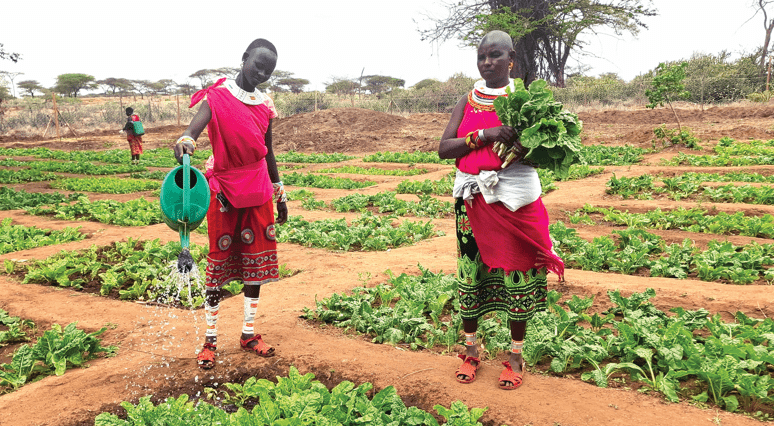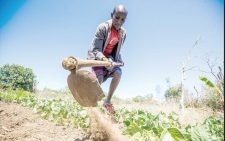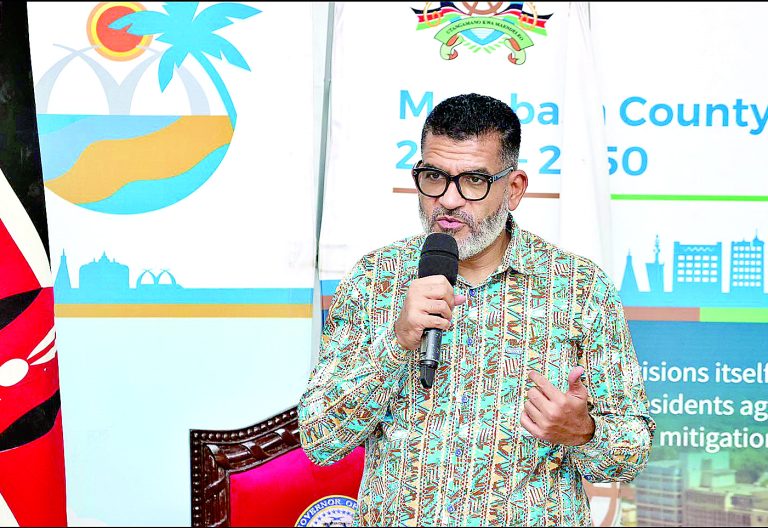Samburu adopt farming, walk away from relief cycle

For many years, residents of Samburu County have been relying on relief food to survive hunger pangs occasioned by negative climate changes.
Due to the unreliable, erratic, and inadequate rainfall, the arid region has been experiencing recurring and prolonged droughts resulting in food and nutritional insecurity.
Committed to turning around the narrative spanning decades, families at Ngilai village in Samburu East constituency have formed farming groups and adopted climate-smart agriculture to promote food security.
Nestled at the banks of Mantasian river which is kilometres away from the Milore hills spectacle, the villagers, encompassing men and women, have been leaving nothing to chance to boost agricultural production in the area to provide for their families and sell the surplus for their economic sustainability.
Tired of taking ‘Loshoro’ a popular local meal made of unga with a pinch of salt over the years, malnutrition among their children and ineffectively supporting their livelihoods through the grazing of their animals on communal land, the villagers joined hands and through the help of USAID Nawiri an 8-year USAID funded program implemented by a consortium of partners led by Mercy Corps began farming on their undeveloped land.
Crop husbandry
The local farmers’ groups started by undergoing training on land preparation, land use planning, crop husbandry, harvesting, post-harvest loss management, and integrated soil, water and pest management before they ventured into climate-smart farming.
For Lbariti Lepuyapui, a 42-year-old member of the Siligi producer group, the perennial threat of malnutrition in the area forced them to venture into an unconventional undertaking as they are used to livestock production.
The livestock business has been blamed for not being economically helpful to locals owing to prolonged droughts that leave them without pasture and water for months.
Search for pasture
“We ventured into farming to try and save our children from malnutrition and make a better living for ourselves. While our children are used to milk, every drought season has been problematic as we leave with the livestock in search of pasture. We were especially motivated to start farming green vegetables after eating less nutritious food for a long time,” stated Lepuyapui.
Lepuyapui told journalists that farmers groups at the village were trained on enhanced food crop production methods including irrigation, use of sack gardens, sunken beds, and oasis gardens among others.
Currently, the farmers have been farming green vegetables among them kales, beans, tomatoes, spinach and pepper.
Para Lepeta, a 33-year-old mother of four children revealed that her two daughters were initially malnourished due to economic disadvantages, lack of knowledge about nutrition and poor access to a variety of foods.
After realizing that their land was productive and could turn around the perennial challenge, Para joined a farmers’ group and together embarked on farming to better the health of their children and their households.
Since she joined the farming groups, Para revealed that there has been an increase in food production and income sources as the group members sell the vegetables to local markets like the nearby Lolkuniyani Livestock market and supplement other household needs using the money earned from the sale as well as save some in a Village Savings and Loaning Association (VSLA) that she is in with her group members.
“Through our organic farming, we have been able to produce enough for our local consumption and we sell the surplus to the neighbouring markets. We use the money to buy items that we don’t farm such as fruits and other nutritious food groups. The introduction of green vegetables has really improved the health of our children and lessened malnutrition cases,” noted Para.












